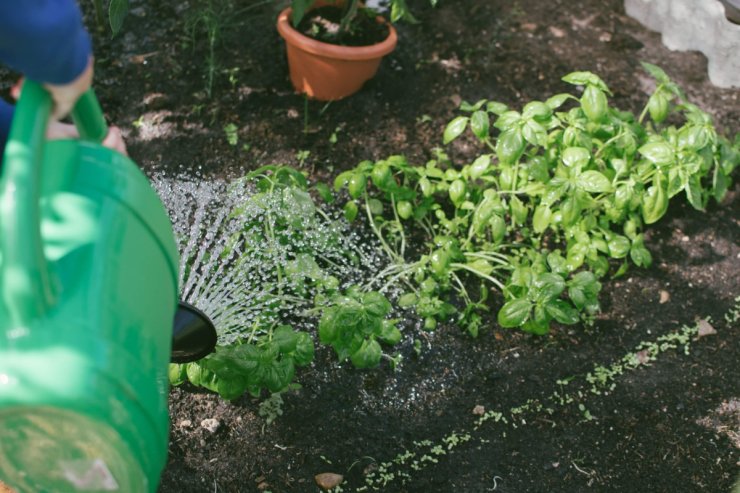
Near the gate of his 11-acre farm in central Rhode Island, John Kenny talks about his quest to improve garden soil. Or, more accurately, to share his knowledge with gardeners so they can improve their own soil.
Part of that plan today includes tossing a few tomato hornworms to his chickens. Wings flap and dust is kicked into the air as the chickens gobble up the bright green treat. While many gardeners fear the damage tomato hornworms can do, John takes it all in stride. It’s just a part of nature that you have to expect on an organic farm.
So how does an organic farm survive without pests like hornworms eating everything? Through regenerative gardening practices and focusing on soil health, John is working in conjunction with nature to create the optimal conditions for a productive and abundant farm. And these regenerative gardening practices can help you improve garden soil in your own yard.
Discover 7 top tips for growing, harvesting, and enjoying tomatoes from your home garden—when you access the FREE guide The Best Way to Grow Tomatoes, right now!
From the farm to the backyard: How to improve garden soil health
John and his partner Mindy Walls started Big Train Farm in 2008 and switched to no-till practices in 2017. In the video above, John points out that farmland is a potentially critical source of carbon sequestration, and tilling counteracts that potential, in essence, “setting back the ecological clock.” The result is a cycle of depleted soil propped up by chemical amendments to grow crops. The chemicals, of course, continue to deplete the soil, so there is no opportunity for the soil to retain atmospheric carbon or regenerate.
Instead, Big Train Farm takes advantage of a type of raised bed planting. These raised beds are different than what you or I might have in our garden, but the concept is similar, and it’s a fabulous way to improve garden soil.
The raised beds on the farm are long, rectangular mounds built up with compost and other organic matter. Because of the moisture-retention properties of these beds, a severe drought in 2022 had minimal impact on the farm.
And what of the pests? This is where regenerative gardening practices can truly help improve garden soil health, and, as a result, your vegetables’ ability to deal with pests. The details can be complex, but the concept is simple. Plants in nutrient-rich soil with a thriving microbial community are stronger and better equipped to handle pests.
John points out that while they do sometimes have to use organic sprays to control pests, it’s becoming more infrequent as the overall ecosystem around the farm improves.
There’s more to regenerative gardening practices than just working to improve garden soil. Another aspect of this method that you’ll find as part of the strategy at Big Train Farm is biodiversity.
Biodiversity is on a spectrum. It’s not uncommon, for example, for large commercial farms to practice monocropping. These are the farms that have hundreds of acres of the same crop, be that corn or soybeans or almond trees. Moving toward more biodiversity, you’ll find farms that grow numerous crops. On a small scale, your garden is the same. You might have a 20-by-20-foot garden with tomatoes, basil, cucumbers, onions, garlic, okra, green beans, and so on.
If we keep going along that spectrum, we get into some regenerative gardening practices, which include no-till methods and a focus on soil health. But it also takes advantage of things like native plants and wildflowers, trees, perennial vegetables, herbs, and berries. This, of course, helps attract birds and insects, improves water retention, and, let’s be honest, it looks quite beautiful!
It’s easy to see how, even on the small scale of a home garden, these practices can give us good results while we do our part to make the world a better place. It doesn’t hurt that we get some tasty vegetables out of the deal, either!
Are there any farms or farming practices you’ve used on a smaller home garden scale? I’d love to read about it!
Discover 7 top tips for growing, harvesting, and enjoying tomatoes from your home garden—when you access the FREE guide The Best Way to Grow Tomatoes, right now!





Expected more information on this practice in this article. Very disappointed.